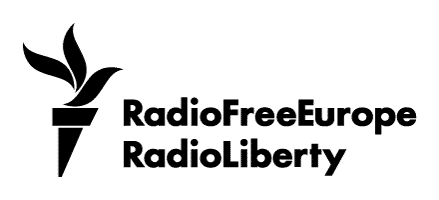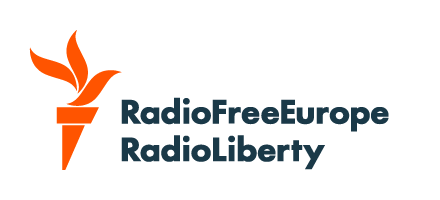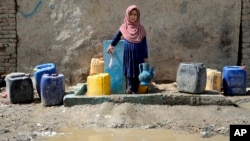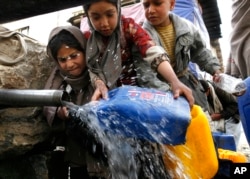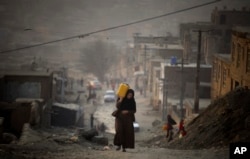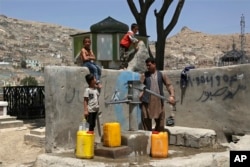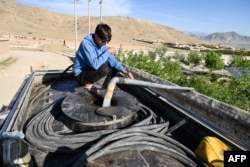Kabul could become the world’s first capital to run out of water completely, experts say, blaming the crisis on rapid population growth, climate change, and mismanagement.
The Afghan capital’s groundwater levels have plummeted by up to 30 meters in the past decade, while almost half of the city’s boreholes -- the main source of drinking water for the residents -- have dried out, according to a recent study by the Mercy Corps NGO.
Demand for groundwater in the city is disproportionately high: each year, 44 million cubic meters more water is extracted than can naturally be replenished -- nearly double the sustainable rate.
Kabul’s population has grown from about 2 million in 2000 to more than 6 million in 2025, putting immense pressure on its water supplies.
The city’s aquifers are also being drained by more than 100,000 unregulated borewells and hundreds of factories and greenhouses, according to Mercy Corps and Afghan water management experts who spoke to RFE/RL.
“Kabul has some 400 hectares of greenhouses that consume about 4 million cubic meters of water annually. said Najibullah Sadid, a water resources and climate change researcherbased in Germany. “There are also more than 500 beverage businesses operating in Kabul. Just one such company, Alokozay, the largest soft drink company in the city, uses about 1 million cubic meters of groundwater each year.”
The United Nations has warned that without swift action, Kabul’s groundwater could be depleted by 2030, posing an existential threat to residents and sparking a major wave of migration.
'Having To Choose Between Water And Food'
Many parts of Kabul have already run dry, and residents rely entirely on the limited amount of water they purchase from tankers.
One person who lives in the relatively affluent area of Taimani in northwestern Kabul says he spends a quarter of his salary on water.
“My monthly salary is 21,000 Afghani ($300) and I spend at least 5,000 Afghani ($70) on water for our family of 10 people,” he told RFE/RL on June 26. “We use this water for tea, cooking, washing-up, laundry, and bathing.”
“There are many families that can’t afford to buy water, it’s like having to choose between water and food,” the Taimani resident said.
He also said that those who can’t pay for water travel several kilometers to bring it from areas that have public water pumps. Even in sweltering summer weather, many apartment blocks in Kabul only get water once or twice a week.
Water contamination is another major challenge that has plagued Afghanistan, where nearly 80 percent of people have no access to safe drinking water, according to the United Nations.
Most of Kabul’s groundwater is contaminated with sewage, toxins, and high levels of arsenic, experts say.
Potential Solutions
The Western-backed former Afghan government, which collapsed in 2021, received more than $4 billion from international donors to overhaul its water sector, according to the World Bank, but the sector remains largely underdeveloped both in the capital and the rest of the country.
Officials of the current Taliban-led government in Kabul did not respond to RFE/RL’s request for comment. However, many local experts believe the Afghan capital could still resolve its water crisis relatively quickly if decisive steps are taken.
“This problem is not new. For over a decade, various proposals on how to tackle the problem have been presented to Afghan authorities, but it has never been a priority for them,” Sadid told RFE/RL.
Among the proposed solutions is the construction of the Shahtoot dam and reservoir, some 30 kilometers southwest of Kabul. If completed, it would supply drinking water to more than 2 million of the city’s residents and help replenish its aquifers.
Another project envisages the construction of a 200-kilometer pipeline to divert more than 100 million cubic meters of water per year from the Panjshir River to the capital.
Feasibility studies for both projects were conducted under the previous Afghan government.
In April, the Taliban’s Ministry of Energy and Water said it was awaiting budget approval to begin construction work on the Panjsher River pipeline. The government is reportedly seeking additional investors to fund the $170-million initiative.
Meanwhile, the Shahtoot project is expected to be finished in 2027, if Afghanistan succeeds in raising funds. It’s estimated that it will cost around $236 million to complete the dam and reservoir.
Abdul Baset Rahmani, a Kabul-based expert on water resources and climate change, says that the water shortage in the Afghan capital could be “resolved within a year-and-half, if there is a political will to do so.”
However, he also warns of urgent needs in the short term, calling on international aid agencies “to provide emergency assistance to the impoverished people in Kabul who cannot afford to buy drinking water.”
“Such support would spare these people from enormous financial and mental strain, prevent diseases, and help many children to return to school,” he says. “There are many children who can’t get education because in order to help their families they walk several kilometers every day to places where water is distributed free of charge.”
Aid groups, such as the International Committee of the Red Cross (ICRC) and the UN Children’s Agency, UNICEF have undertaken several projects in Afghanistan in recent years to help hundreds of thousands of people access clean drinking water.
Their projects in 2024 included the repair of “1,315 hand pumps and the installation of 1,888 bio-sand filters to remove contaminants from water,” in several Afghan provinces, according to the ICRC.
But despite these efforts, unless more urgent government action is taken and major infrastructure projects are completed, Kabul’s water crisis is likely to persist and could ultimately force an estimated 3 million people – or roughly half its population -- to flee the city.


